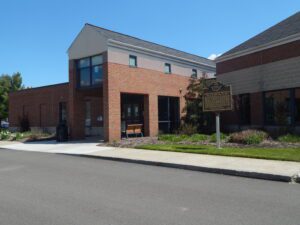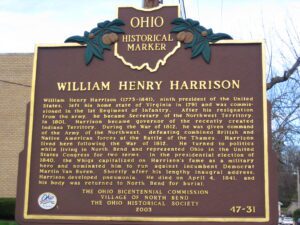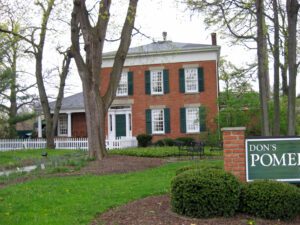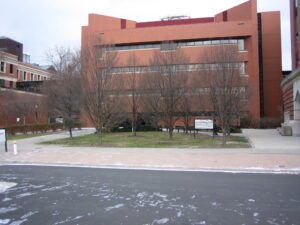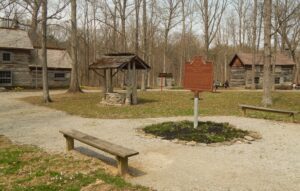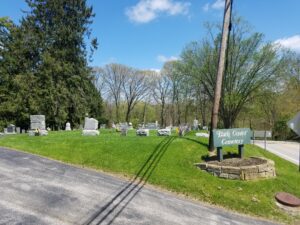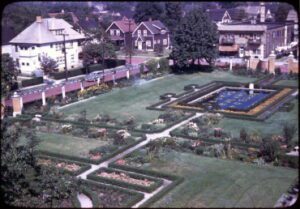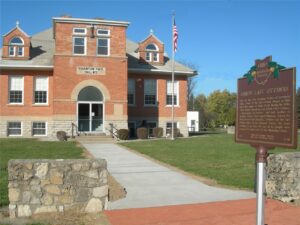, OH
John Richards Buchtel was born in Green Township, Ohio. A successful businessman and philanthropist, Buchtel was a leading spirit in the Akron Library Association. He donated to establish the Akron Public Library and served as the First Chairman of the Board. He also donated $31,000 in 1870 to found Buchtel College, which became The University of Akron in 1913, where he often paid the tuition of underprivileged students. He served as the college’s President of the Board of Trustees and served for the board of A & M University, which is now The Ohio State University.
, OH
William Henry Harrison (1773-1841), ninth president of the United States, left his home state of Virginia in 1791 and was commissioned in the 1st Regiment of Infantry. After his resignation from the army, he became Secretary of the Northwest Territory. In 1801, Harrison became governor of the recently created Indiana Territory. During the War of 1812, he was given command of the Army of the Northwest, defeating combined British and Native American forces at the Battle of the Thames. Harrison lived here following the War of 1812. He turned to politics while living in North Bend and represented Ohio in the United States Congress for two terms. In the presidential election of 1840, the Whigs capitalized on Harrison’s fame as a military hero and nominated him to run against incumbent Democrat Martin Van Buren. Shortly after his lengthy inaugural address, Harrison developed pneumonia. He died on April 4, 1841, and his body was returned to North Bend for burial.
, OH
The Pomeroy House, built from 1847 to 1848, was the home of Alanson Pomeroy and his wife, Kezia. They continued the tradition, known as “Pomeroy Hospitality,” that began when Alanson’s parents established a tavern in Strongsville. Prominent in the community, Alanson served as township trustee and Justice of the Peace in Strongsville Township, and was a leader in the Congregational Church. Oral tradition holds that the Pomeroy House served as a stop on the Underground Railroad. Runaway slaves were brought from Oberlin, often concealed under bales of hay in wagons, and hidden in the cellar of the house until they could be safely taken to Rocky River. From there, the fugitives boarded ships headed to Canada. The Pomeroy House, listed on the National Register of Historic Places, was restored in 1979 and opened as Don’s Pomeroy House restaurant in 1980.
, OH
Roy J. Plunkett was born in New Carlisle, Ohio, and graduated from Newton Township High School in Pleasant Hill. He received his B.A. degree from Manchester College before enrolling as a graduate student in chemistry at The Ohio State University, receiving his Ph.D. in 1936 under the direction of William Lloyd Evans in the McPherson Chemical Laboratory. On April 6, 1938, while employed by the Du Pont Company to develop a nontoxic refrigerant, Plunkett discovered Teflon®, one of the most important polymers of the 20th century. On that day, Dr. Plunkett opened a tank of gaseous tetrafluoroethylene only to find that the gas was gone–its molecules had combined with another (“polymerized”) to form a solid material. Teflon has been used on cookware, the outer skin of space suits, nose cones of space vehicles, bone replacement, and much more.
, OH
Edward Bebb, father of William Bebb and first Welshman to settle in Paddy’s Run, Morgan Township, Butler County purchased this cabin in 1801. Originally the cabin stood four miles southeast of this site on the Dry Fork of the Whitewater River. It was here that William Bebb was born on December 8, 1802, the first white child born in Butler County west of the Great Miami River. At the age of twenty, after attending district schools, William Bebb became a teacher. In 1826 he became the first teacher at Paddy’s Run School. Two years later Bebb and his wife opened a boarding school on his father’s farm. While teaching school he began the study of law and in 1831 passed the state bar examination. A year later he began to practice law in Hamilton, where he soon became an active politician. In 1840 he stumped the state for Harrison and Tyler and in 1846 he was nominated for Governor by the Whig party. He was elected on the slogan “Wm. Bebb and a Home Currency against David Tod and Pot Metal.” After his term as governor, Bebb served in a number of government positions until his retirement to his farm near Rockford, Illinois. He died on October 23, 1873.
, OH
Settlers from New England purchased this land in 1817 for use as a burying ground and to build a meeting house. Located in the center of Bath Township, a part of the Connecticut Western Reserve, the site provided a convenient place for public and religious gatherings and for a cemetery. Out of need, the cemetery was established before the township was founded in 1818. Many of Bath Township’s farming families, as well as both owners and operators of businesses of Bath, are interred in the cemetery. In a tradition originating with Civil War veteran Perry Alexander, the graves of all veterans are marked with an American flag on Memorial Day as a tribute to their service.
, OH
The Village of Collinwood was originally a part of Euclid Township of the Western Reserve and named after the death of railroad chief engineer Charles Collins in 1876. Originally known as “Frogsville,” the population of Collinwood dramatically increased in the 1870s, due partly to repair roundhouses of the Lake Shore & Michigan Southern Railroad. By 1901, the Village has grown to 7,500, and as a result, the schoolhouse, which once housed 200 students and four classrooms, had been enlarged twice to house 350 students in eight classrooms. Constructed in 1901, the Lakeview School was the site of a tragedy that reverberated across the nation and around the world. (Continued on other side)
, OH
Here in the Oak Openings Region of northwest Ohio, some of the last Ottawa villages in Ohio lined the banks of Swan Creek during the 1830s. These Native Americans were led by Chief Ottokee (Autokee), a descendant of Pontiac, and half brother to another Ottawa Chief named Wauseon. Known for being honest and friendly, Ottokee was the last Ottawa chief in the Maumee Valley, for years refusing to go when the last of his people were removed to lands west of the Mississippi River.


